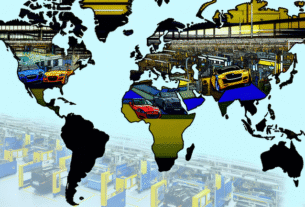As the telecommunications world converges in Copenhagen for ECOC 2025, TeraHop is poised to turn heads with its latest wave of optical transceiver designs tailored specifically for AI and data center environments. Running from September 29 to October 1, this premier gathering provides an ideal stage for the company to highlight how its innovations will power the next generation of high-speed networks.
In an era where generative AI models and hyperscale cloud services demand ever-higher bandwidth, traditional networking hardware struggles to keep pace. TeraHop’s portfolio addresses this gap head-on, offering modular, high-density transceivers that balance blistering throughput with energy efficiency. These improvements aren’t incremental—they reflect a strategic shift toward smarter, more sustainable data transport.
At the heart of TeraHop’s showcase are pluggable modules that support data rates up to 800Gbps, leveraging advanced silicon photonics and custom DSP engines. Whether optimizing rack-to-rack links in sprawling data centers or enabling ultra-low latency connections between AI training clusters, these transceivers demonstrate how hardware can evolve alongside software innovations.
Beyond raw speed, TeraHop has placed a premium on power consumption and thermal management. By integrating novel cooling pathways and intelligent power-scaling protocols, their solutions minimize carbon footprints and operational costs. For operators wrestling with energy budgets and sustainability targets, this combination of performance and efficiency could prove transformative.
From my perspective, TeraHop’s approach exemplifies the industry’s broader pivot toward vertical integration—melding optical design, electronics, and firmware innovation under a single roof. This unified strategy accelerates development cycles, slashes compatibility hurdles, and ultimately delivers more reliable, easier-to-deploy modules for network architects.
Furthermore, the company’s global manufacturing footprint and customizable design services position it well against both established incumbents and emerging challengers. As data centers proliferate and edge computing gains traction, such agility will be a critical differentiator—enabling end users to tailor connectivity solutions without lengthy lead times.
When the dust settles in Copenhagen, TeraHop’s showcase will likely be remembered not just for headline specs but for its holistic vision: forging optical transceivers that anticipate tomorrow’s AI workloads and environmental imperatives. In an industry where speed alone is no longer enough, this balance of innovation, efficiency, and scalability could chart the course for optical networking’s next frontier.




